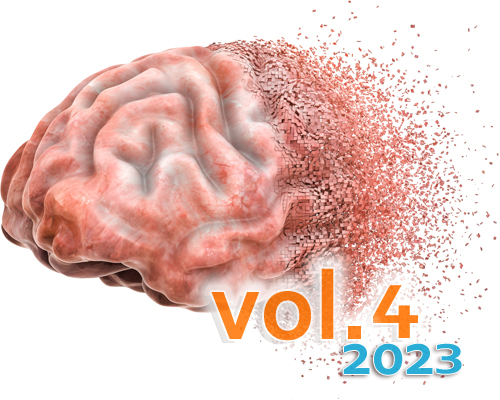Serum neurofilament light chains in progressive multiple sclerosis patients treated with repeated cycles of high-dose intravenous steroids
DOI:
https://doi.org/10.17879/freeneuropathology-2023-5049Keywords:
Progressive multiple sclerosis, Serum neurofilament light chains, High-dose intravenous steroidsAbstract
Background and objectives: In progressive multiple sclerosis (MS) patients, CNS inflammation trapped behind a closed blood brain barrier drives continuous neuroaxonal degeneration, thus leading to deterioration of neurological function. Therapeutics in progressive MS are limited. High-dose intravenous glucocorticosteroids (HDCS) can cross the blood-brain barrier and may reduce inflammation within the CNS. However, the treatment efficacy of HDCS in progressive MS remains controversial. Serum neurofilament light chains (sNfL) are an established biomarker of neuroaxonal degeneration and are used to monitor treatment responses. We aimed to investigate whether repeated cycles of intravenous HDCS reduce the level of sNfL in progressive MS patients.
Methods: We performed a monocentric observational study of 25 patients recruited during ongoing clinical routine care who were treated with repeated cycles of intravenous HDCS as long-term therapy for their progressive MS. sNfL were measured in 103 repeated blood samples (median time interval from baseline 28 weeks, range 2-55 weeks) with the Single Molecular Array (SiMoA) technology. The Expanded Disability Status Score (EDSS) was documented at baseline and follow-up.
Results: The median age of patients was 55 years (range 46-77 years) with a median disease duration of 26 years (range 11-42 years). sNfL baseline levels at study inclusion were significantly higher in progressive MS patients compared to age-matched healthy controls (median 16.7 pg/ml vs 11.5 pg/ml, p=0.002). sNfL levels showed a positive correlation with patient age (r=0.2, p=0.003). The majority of patients (72%, 16/23) showed reduced sNfL levels ≥20 weeks after HDCS compared to baseline (median 13.3 pg/ml, p=0.03). sNfL levels correlated negatively with the time interval from baseline HDCS therapy (r=-0.2, p=0.03). This association was also evident after correction for treatment with disease-modifying drugs (adjusted R2=0.10, p=0.001). The EDSS remained stable (median 6.5) within a median treatment duration of 26 weeks (range 13-51 weeks).
Conclusion: Although larger studies are needed to confirm our findings, we were able to demonstrate that HDCS treatment reduces sNfL levels and therefore may slow down neuroaxonal damage in a subgroup of patients with progressive MS. Moreover, a stable EDSS was observed during therapy. Findings suggest that HDCS may be beneficial for the treatment of progressive MS.
Metrics
Published
How to Cite
Issue
Section
License
Copyright (c) 2023 Lidia Stork, Michael Haupts, Niels Kruse, Petra Spill-Askeridis, Adriane Kutllovci, Martin S. Weber, Wolfgang Brück, Imke Metz

This work is licensed under a Creative Commons Attribution 4.0 International License.
Papers are published open access under the Creative Commons BY 4.0 license. This license lets others distribute, remix, adapt, and build upon your work, even commercially, as long as they credit you for the original creation. Data included in the article are made available under the CC0 1.0 Public Domain Dedication waiver, unless otherwise stated, meaning that all copyrights are waived.



















